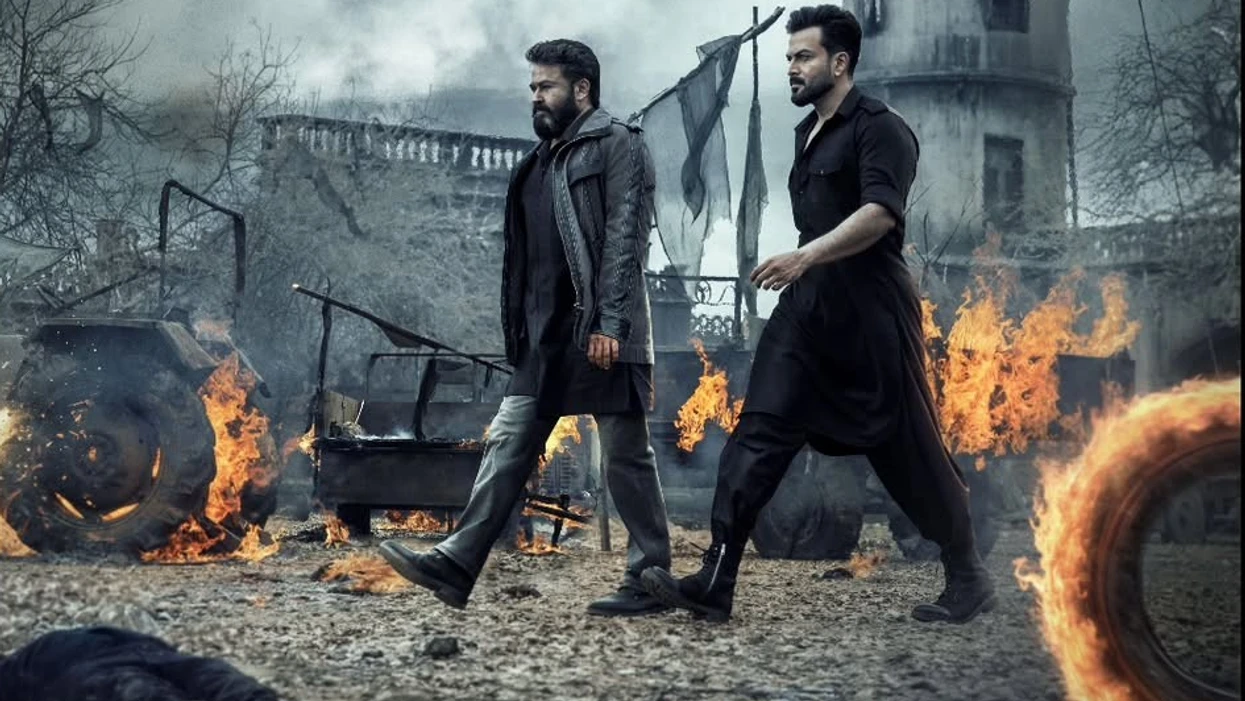With just four movies under his belt, Ryan Coogler has emerged as one of the recent generation’s most promising and consistent filmmakers. Besides, he successfully transcended from the gritty biographical drama Fruitvale Station to taking over the Rocky franchise with the successful spinoff, Creed. He even made it bigger in the superhero movie territory in Black Panther and its sequel, Wakanda Forever. His latest movie, Sinners is something that it doesn’t cross my mind that he will end up exploring the horror genre. A vampire genre, to be exact but if you watch his past filmography, it’s obvious that Coogler isn’t settling down for a straightforward genre fare.
In other words, he has a lot of things to say here, beginning with a 1930s historical drama that takes place during the racially segregated Jim Crow era. He is confident enough not to jump straight to the horror, even though he does give us a glimpse in the opening prologue: an injured young man Sammie (singer Miles Caton in a remarkable acting debut) arriving in the church looking overwhelmed. What happens to him? Coogler, who also wrote the screenplay, then takes us back to a day prior. Using a deliberate slow-burn approach to tell his story, he clearly wants us to get to know the characters first. He introduces Smoke and Stack (both played by Michael B. Jordan in a dual role), the well-dressed identical twins arriving in their hometown of Clarksdale, Mississippi Delta after spending their fruitful years making good money in Chicago.
Returning home as wealthy men with loads of cash, they waste no time getting down to business by buying a mill from a white owner named Hogwood (David Maldonado). Their plan here is to open a juke joint because they have plenty of good liquors and beers in their truck to be sold to the townsfolk. They need music too and they already got one from their cousin, Sammie, who happens to be an aspiring singer with real talents in singing blues and playing a guitar. They also convince Delta Slim (Delroy Lindo), an old-timer blues pianist to work for them. Opening a juke joint means they need a reliable bouncer and the immediate candidate goes to Cornbread (Omar Benson Miller), who’s been working at the cotton field before their arrival.
Coogler also delves into the love stories including Smoke and the estranged Annie (a magnificent Wunmi Mosaku), where they used to have a baby but already died a long time ago. Then, there’s Stack, who finds himself dealing with Mary (Hailee Steinfeld, in a perfectly sultry supporting turn). They may have been ex-lovers but Mary still can’t stop thinking about him, even though she’s already married. Finally, Sammie falls in love with a young married woman named Pearline (Jayme Lawson) after he first lays his eyes on her at the railway station.

The drama may look like an overlong filler trying to justify its bloated 137-minute length but it somehow works like a charm, even with the erratic pacing tends to get in the way. One of Coogler’s impressive directorial prowess in his past filmography lies in his strong emphasis on developing his characters and the same goes with Sinners. He works with his frequent muse, Michael B. Jordan and this time, in a scene-stealing dual performance. Kudos to the visual effects for making me believe they are actually identical twins but what impresses me the most is Jordan’s distinct acting flair. Beyond the twins’ sharply dressed appearances and wearing different hats – one’s blue and the other’s red – they have different personalities. Smoke is a no-nonsense, business-savvy person who gets things done whenever he needs it. He doesn’t tolerate people who try to rob him, and at one point, he lets his gun do the talking. On the other hand, Stack is a tough, smooth talker but a mess when comes to handling his love relationship.
Now, you might be wondering where’s the horror in Sinners because well, you have to wait around halfway through the movie before Coogler finally introduces a man named Remmick (Jack O’Connell). He’s the mean antagonist of the movie arriving in Clarksdale to unleash hell. I love how Coogler teases his introduction during the daylight scene and horror fans will have no problem knowing what kind of person he is. Remmick is a charmer who knows well how to manipulate his victims before he shows his true color. His arrival is equivalent to a manifestation of white-evil supremacy demonstrating his authoritarian rule against Black people, which fits the context behind the movie’s 1930s setting of the Jim Crow era.
And it gets more interesting with Coogler incorporating blues music into his vampire movie, given the genre’s association with the devil in the earlier days. The roots of blues music a.k.a. the “Devil’s music” trace back to the early 20th century, when it grew its popularity among the African-American communities in the American South. Blues music is often synonymous with morally dark themes of lust and rebellion that clash with societal norms.
The arrival of Smoke and Stack in the otherwise peaceful town of Clarksdale with honest people earning their living marks the beginning of the end. The twins’ sinful past has brought them back together from their Chicago days with dirty money and smuggled booze. Their decision to open a juke joint and bring in the musicians to play blues music only makes things worse. This is especially true with Sammie’s unusual talent in playing a guitar and his love for blues music unwittingly attracts and even summons the devil, which in this case, the vampires led by O’Connell’s Remmick.
So, when the horror finally arrives, Coogler’s no-holds-barred approach sees the writer-director going all out with the graphically violent set pieces and lots of stomach-churning gore. A true definition of all hell breaks loose, where Coogler includes visual nods from the early John Carpenter’s works and even Robert Rodriguez’s horror movies, specifically From Dusk Till Dawn but leaving out the quirky Tarantino-esque influence.
The combination of Ultra Panavision 70 and IMAX cameras is cinematically unique, allowing Coogler and cinematographer Autumn Durald Arkapaw to immerse the audiences in the movie’s evocative widescreen lensing and the visceral thrills of the bloodletting mayhem in the second half. The sound design is impeccable and not to forget, Ludwig Göransson’s score that gives a distinctly Southern vibe, complete with a loud guitar riff that matches the increasingly bleak tone of the movie.






